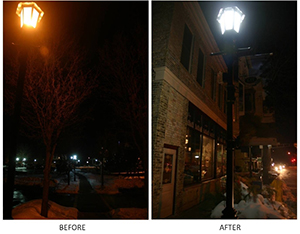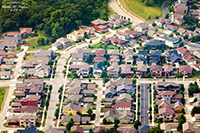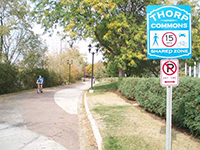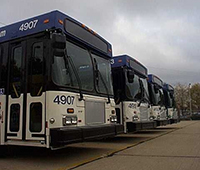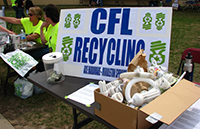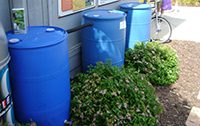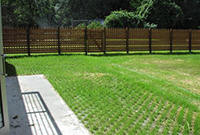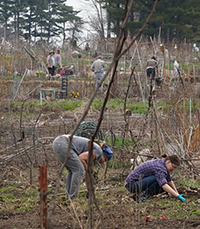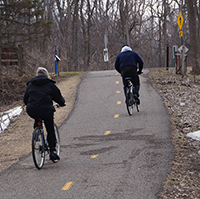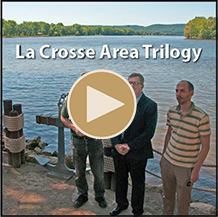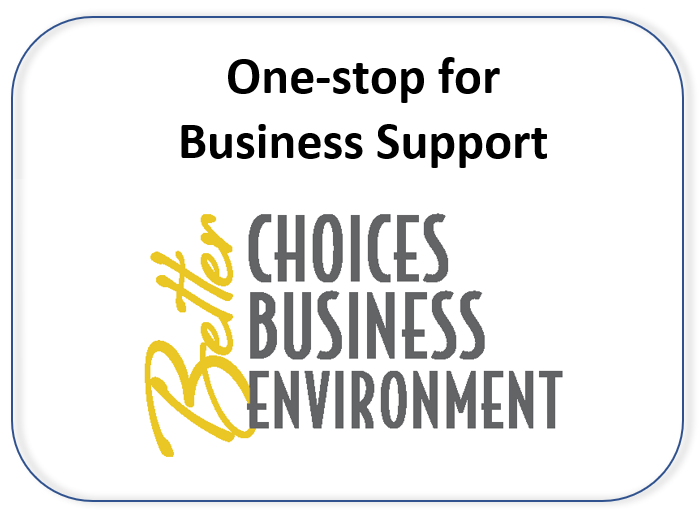Resources for Legacy Communities
NEW Legacy Communities Scoresheet Toolkit
- Required resources:
- SharePoint Site – Visit the SharePoint site to read more about the new scoresheet and the materials included in the toolkit.
- How to get a WAMS ID – Use this document if you need to create a WAMS ID. A WAMS ID is required to enter your data in the scoresheet.
- Instructions for how to enter data – Use this document as you are actively entering your data.
- Metrics Descriptions – Use this document as you are collecting your data for details on how to calculate the various metrics.
- Supporting Actions Descriptions – Use this document as you are collecting your data for details on how to report on the various supporting actions.
- Optional resources:
- Metrics Companion Spreadsheet [Excel]– Use this spreadsheet to collect your metrics data internally, BEFORE you enter it into the scoresheet.
- Supporting Actions Companion Spreadsheet [Excel] – Use this spreadsheet to collect your supporting actions data internally, BEFORE you enter it into the scoresheet.
- Tips & Tricks – Reference this document for helpful tips when collecting your data and completing your scoresheet.
- Scoresheet Video Walkthrough - Watch this 12-minute video for a demonstration of how to enter your data into the scoresheet.
Legacy Communities - Where to begin:
- Legacy Communities Charter
- Wisconsin Legacy Communities' Sustainability Practices: From Proficiency to Powerhouses! – A Green Tier Legacy Communities and CHANGE Project Report by University of Wisconsin-Madison researchers
- Green Tier Legacy Communities: A Guide to Sustainability Practices - A report by Fei Ma, Kathryn Kirchgasler and Kyle Bartowitz, graduate students in the Nelson Institute for Environmental Studies at the University of Wisconsin-Madison (2012).
Community energy use strategies help municipalities look towards renewable fuels and energy efficient alternatives which help reduce the total energy consumption of their communities. It also helps lead municipal employees to conserve energy, preserve the environment and decrease greenhouse gas emissions from municipal facilities, services and vehicle fleets.
- Use PACE financing. Learn more about PACE Wisconsin.
- Make watt meters available to the public.
- Adopt a Residential Energy Conservation Ordinance (time-of-sale certification and upgrades).
Measuring community energy use
- Work with local utility companies to calculate total electricity and natural gas consumption annually, beginning with the fifth year before entering the program.
- Become established as an Energy Independence Community (EIC).
Government energy use policies
- Include transportation energy/emissions as criterion in RFPs for purchases of goods over $10,000.
- Develop list of lighting, HVAC and shell improvements to raise Energy Star Portfolio Manager or LEED EBO&M score.
- Reduce motor fuels use for non-transit activities.
- Provide transit passes at 50% or more off the regular price and/or provide parking cash-out options for local government employees.
- Streetlights operate at 75 lumens/Watt or higher.
- Stoplights are LEED or functional equivalent.
- Municipal electricity purchases are at least 5 percentage points higher in renewable content than the statewide renewable portfolio standard requires. Calculation may include self-generated power and purchased offsets.
Measuring government energy use
- Complete EPA Energy Star Portfolio Manager spreadsheet for government energy use or score existing buildings with LEED EBO&M.
- Calculate annual government fleet use of motor fuels, in gallons of petroleum and biofuels, beginning with the fifth year before entering the program.
- All new and renovated municipal buildings must meet LEED Silver or greater.
Energy resources
- Best Practices Review: Reducing Energy Costs in Local Government
- Clean Cities
- Energy Independent Communities
- Energy On Wisconsin
- LED Street Lighting Cost Benefit Analysis Tool – The U.S. Department of Energy’s Municipal Solid-State Street Lighting Consortium has created an economic cost-benefit analysis tool to help cities and utilities estimate the costs and impacts associated with switching to LED street lighting.
- Municipal Energy Planning: An Energy Efficiency Handbook – UW Extension
Land use policy
Land use policy strategies help structure communities to improve their overall environmental, economic and social health. This is primarily done by promoting mixed-use and infill development, walkable neighborhoods and an overall sustainable lifestyle. Assessments should be made that are context-specific and facilitate projected growth trends. Land use policy also includes natural resource & management strategies that help conserve, reserve, protect and promote a community's greenspace, wildlife, wetlands and waterways for future generations by promoting pervious surfaces and adequate setbacks.
Infill
- Identify priority areas for infill development, including those eligible for "brownfields funding."
- Create land bank to acquire and assemble priority infill sites.
- Develop an inventory of known contaminated properties for reuse planning, with possible GIS application.
Walk score
- Measure Walk Score at 10 random residential addresses per Census tract, compute average and improve upon overall score.
Zoning
- Adopt a traditional neighborhood design ordinance (If population is less than 12,500).
- Zoning for office and retail districts permits floor-area ratio > 1, on average.
- Zoning for office and retail districts requires floor-area ratio > 1, on average.
- Zoning code includes mixed use districts.
- Mixed-use language from Smart Code.
Canopy
- Adopt tree preservation ordinances.
- Set a tree canopy goal and develop a management plan to achieve it.
- Require trees to be planted in all new developments.
- Certification of membership for Tree City USA.
Mowing
- Local government establishes rights of way to be mowed or cleared only for safe sightlines and/or to remove invasive species.
Water protection
- Establish 75-foot natural vegetation zone easement from surface water.
- Create an inventory of wetlands and insure no net annual loss.
Land use resources
Transportation demand management strategies work at reducing Green House Gas (GHG) emissions and Vehicle Miles Traveled (VMT) by influencing healthier individual behavior. These strategies encourage walking, bicycling and transit as modes of transportation within a community and seek to curb the number and length of trips by vehicles. Transportation strategies also aim to reduce GHG emissions and VMT by improving the overall performance of a transportation system. These strategies improve existing infrastructure, introduce new technology and plan for the future of the transportation system.
Bicycle and pedestrian programs/projects
- Require bike parking for all new nonresidential and multifamily uses.
- Set standards for placement and number (as a function of the intensity of use) for bike parking spaces.
- Make commuter bike routes identifiable and cleared.
- Obtain recognition by the League of American Bicyclists certification.
- Funding and operating for Safe Routes to School SRTS program (or functional equivalent) covering at least 10 percent of students.
- Conduct annual survey of students' mode of transport to school.
Employer-based programs
- Require large employers seeking rezoning to set a price signal (cashout or charge).
- Require large employers seeking rezoning to provide subsidized transit.
Traffic volume
- Track VMT or traffic counts and report on efforts at reduction (including those on this list).
- Eliminate parking minimums from nonresidential districts.
- Set parking maximums at X per square feet for office and retail uses.
- Scheduled transit service at basic level (hour peak service within half-mile of 50% of addresses).
- Scheduled transit service at enhanced level (half-hour peak service within 75% of addresses).
Preservation and improvement
- Develop and fully fund a comprehensive maintenance program for existing roads.
- Charge impact fees for new roads.
- Calculate lane-miles per capita for arterials and collectors, and show reductions.
- Prepare a plan identifying disconnections in bike and pedestrian networks, prioritizing the establishment of new connections and identifying potential funding sources for the most important projects.
- Any proposal to add lanes to a two-lane roadway shall be evaluated for a center turn lane, the preferred option over an expansion to four lanes.
Electric vehicles
- Allow Neighborhood Electric Vehicles (NEVs) on appropriate roadways.
- Provide public charging stations
Vehicle idling
- Ban idling (more than 5 minutes) with local government vehicles.
- Ban idling (more than 5 minutes) community-wide.
Transportation resources
- Action Plan for Bicycle Friendly Communities
- Built in Ohio
- CDC Transportation Recommendations
- Citywide Transportation Greenhouse Gas Emission Inventories: A Review of Selected Methodologies
- Driven Apart
- Evaluating Public Transportation Health Benefits
- "Street Smart" Walk Score
- Tools of Change
- Transit Oriented Development and the Potential for VMT-Related GHG Emissions Growth Reduction
Waste management and reduction
Waste management and reduction strategy options encourage municipalities and their citizens to divert organics and recyclables from landfills and properly dispose of hazardous materials in an effort to reduce waste in a community.
- Community waste stream monitored at least annually. Waste reduction plan prepared and updated annually.
- Waste and materials management plan based on "zero-waste" principles, with specific goals, prepared and updated annually.
- Construction/deconstruction waste recycling ordinance.
- Mandatory residential curbside recycling pickup that covers paper, metal cans, glass and plastic bottles.
- Develop a municipal collection program that encourages the diversion of food discards, yard materials and other organics from landfills to composting or anaerobic digestion with energy recovery.
- Develop and promote programs that dispose of household hazardous, medical and electronic waste.
- Use anaerobic digesters to process organic waste and produce energy.
- Implement municipal ordinances requiring manufacturer takeback for fluorescent bulbs, thermostats and other mercury-containing devices.
- Ordinances in place to reduce the usage of phone books as well as single-use shopping bags, plastic foam food containers and other disposable packaging.
- Pay-as-you-throw system implemented by municipality or required of private waste haulers.
- Use public education and outreach to promote recycling, backyard composting, product re-use and waste reduction.
Water management
Water conservation strategy options set baselines and goals for water and energy performance in municipalities. They measure progress and promote water conservation by the government, business and the community at large. Additionally, they encourage the use of the best management practices to achieve a reduction in the number of harmful pollutants introduced to our streams, rivers and lakes through storm water and link water conservation and the preservation of land, wetlands and wildlife habitat while promoting compact development, restoration and rehabilitation efforts and long-term planning.
Water conservation
- Track water and sewer use annually, beginning with fifth year before entering program, and develop plan for reductions.
- Develop a water loss control plan with targets below the 15% required by the state and include a system-wide water audit implementation and timetable.
- Join EPA's WaterSense Program for water utilities or the Groundwater Guardian Green Sites program and promote them to local business.
- Use block rates and flat rates to encourage water conservation among residential, commercial and industrial users.
- Financial assistance for sewer lateral replacements.
- Upgrade water utility equipment (e.g., variable frequency drive motors) to achieve energy efficiency.
- Infiltration and inflow reduction by 10%.
- Wastewater biogas captured and used in operations.
- Plan for replacing all toilets using > 1.6 gpf and annual progress sufficient to reach 90 percent replacement in 10 years.
Local government use
- Install waterless urinals in men's restrooms at municipal facilities (city hall, parks, etc.)
- All outdoor watering by local government, excluding parks and golf courses, from rain collection.
- Develop a water efficiency and conservation plan for municipal buildings.
Storm water management
- Develop a regular street sweeping program to reduce total suspended solids.
- Storm water utility fees offer credits for best management practices such as rain barrels, rain gardens and pervious paving.
- Inventory all paved surfaces (e.g., by GIS mapping), and develop a plan for reduction.
- Work with commercial or light industrial businesses to develop storm water pollution plans.
Land development
- Identify key green infrastructure areas during plan development and/or implement a plan to acquire and protect key green infrastructure areas
Water resources
- Creating Resilient Water Utilities (CRWU)
- CREAT Risk Assessment Application for Water Utilities
- Green Infrastructure for Clean Water Act of 2010
- Green Strategies for Controlling Storm water and Combined Sewer Overflows – (Milwaukee and other Cities)
- Minnesota Water Sustainability Framework
- Rubber Ducky [YouTube exit DNR]
- Tabletop Exercise Tool for Water Systems: Emergency Preparedness, Response, & Climate Resiliency
- The Value of Green Infrastructure
Healthy community planning
Policies and projects related to incorporating healthy living into community design – whether by built form, programs, education, etc. in an effort to reduce trends in poor nutrition, inactive lifestyles, chronic diseases, such as obesity and heart disease, and other negative health risk factors.
Policies affecting multiple program areas
- Adopt a resolution that promotes Health in All Policies at the community level (e.g., HEAL Resolution). Include that educational campaigns supporting a program covered by the resolution are appropriately targeted to all of the populations addressed by the program.
- Establish a Health Impact Assessments policy, including when an assessment is required and its scope.
Planning
- Add health policies in 1 or more of the community's plans, including the comprehensive plan, long-range transportation plan, bicycle/pedestrian plan and open spaces recreation plan (embedded or stand-alone chapter) or develop a comprehensive, community wide wellness plan.
- Site schools in the Comprehensive Plan for accessibility with existing or new bicycle and pedestrian infrastructure.
- Encourage the formation and/or support of Neighborhood Improvement Districts (NIDs), Neighborhood Development Corporations or other similar types of neighborhood reinvestment and enhancement strategies in plans or policies.
Healthy food access
- Implement strategies (urban agriculture, community gardens on public land, diversified farmer's markets, expanded traditional retail food options, ordinances to allow urban chickens and beekeeping and vegetable gardening in rights of way) that help increase fresh food access in the community, in particular in areas with food insecurity (e.g., "food deserts" and "food swamps"), including access by EBT and WIC participants.
- Create a Food Systems Plan that addresses the production, distribution, value-added, marketing, end-market, and disposal of food, and charge a new or existing governmental body to oversee the plan’s implementation.
Physical activity and access
- Provide an on-street and/or off-street trail network connecting recreational areas in the community (e.g., safe routes to parks) and other trip generators, such as shopping malls, ensuring all neighborhoods are included in planning and implementation.
- Encourage pedestrian and bicycle site connections from front door of businesses or apartments to a public sidewalk and/or bike lane ensuring connections to all neighborhoods.
- Provide education and establish programming to encourage physical activity, especially by youth.
- Establish an expanded public transit that serves commuters from all neighborhoods and major parks and recreation facilities and has racks on vehicles for carrying bicycles.
- Require sidewalks in new residential areas and establish a policy for adding sidewalks, as appropriate, in areas built out without sidewalks.
- Implement a Complete Streets policy.
- Provide recreation programs for youth, adults, senior citizens and disabled persons
- Establish a pedestrian safety task force.
Housing
- Adopt ordinances and programs to maintain a healthy housing stock (code enforcement, landlord licenses, volunteer program, truth-in housing disclosure before sale, etc.).
- Allow life cycle or adaptable housing options, such as "aging in place", accessory dwelling units, Universal or Inclusive Design, Dementia Friendly Communities, Age-Friendly communities etc.
- Establish a program to make housing more affordable.
- Establish a program to address chronic homelessness, such as “permanent housing.”
Crime prevention and other harm reduction
- Use by policy, ordinance or practice, Crime Prevention Through Environmental Design and active threat planning to make public spaces, such as recreational space, crime free.
- Establish and implement Harm Reduction strategies for alcohol outlet density and sexual oriented establishments (e.g., zoning limitations).
- Adopt an ordinance or policy that requires tobacco-free and e-cigarette free apartments or places limitations on such structures.
- Adopt an ordinance or policy that promotes tobacco-free and e-cigarette free parks and/or public events on local government-owned property.
Climate change
- Create and implement a climate change action plan that includes a carbon footprint study, and health related components on reducing air pollution from combustion of fossil fuels and responding to heat episodes and flooding, focusing in particular on most vulnerable populations.
Noise
- Adopt an ordinance, including conditional use permits, on noise abatement for various zoning districts.
Employee health
- Implement a wellness program for employees of the local jurisdiction
- Encourage or partner with others, such as the Chamber of Commerce, etc., to advance workplace wellness programs within the community.
Placemaking
- Support placemaking at varying scale (neighborhood to major city facility) and permanence (temporary to permanent) through programming, financial support and removal of regulatory barriers to promote healthy living and social capital in the community.
- Adopt form-based codes or similar type design guidelines for healthy active living environments.
Waste pharmaceuticals
- Establish partnerships to reduce waste pharmaceuticals generated in the community and to efficiently collect remaining wastes to prevent their abuse and entry into solid waste or wastewater.
Healthy community implementation tools
Implementation Tools
- Action Resources: Dementia-Friendly Communities, Act on Alzheimer’s
- Active Community Environments (ACEs) Initiatives, Wisconsin Department of Health Services
- Building Healthy Communities, pages 243 to 265 in Cities at Work: Progressive Local Policies to Rebuild the Middle Class, Joel Rogers and Satya Rhodes-Conway, COWS [Center on Wisconsin Strategy] (February 2014)
- California Healthy Eating Active Living (HEAL) Cities Campaign
- Change Lab Solutions
- Cities for Workforce Health, League of California Municipalities
- Design for Health
- Designing, Planning, and Building Healthy Places, Center for Disease Control and Prevention
- Food System Initiatives, Wisconsin Department of Health Services
- Form-Based Codes Institute
- A Guide to Outdoor Safety & Health
- Health in All Policies: A Guide for State and Local Government
- Healthier Communities Initiative, YMCA of the USA
- "Inclusive Design for Getting Outdoors," I'DGO
- Planning and Community Health Planning Center, American Planning Association
- A Review of Health Impact Assessments in the U.S.: Current State-of-Science, Best Practices and Areas for Improvement, Office of Research and Development, US Environmental Protection Agency
- Strong Towns Local Leaders Toolkit
- Toward a Sustainable Community: A Toolkit for Local Government,” Volume 2, University of Wisconsin-Extension, chapter on Local Food (2013)
- Trees help achieve resolutions to be healthy
Reports
- Beyond Storms & Droughts: The Psychological Impacts of Climate Change, ecoAmerica and the American Psychological Association (2014)
- Developing Built Environment Programs in Local Health Departments: Lessons Learned From a Nationwide Mentoring Program” American Journal of Public Health: May 2014, Vol. 104, No. 5, pp. e10-e18.
- Do health impact assessments make a difference? A national evaluation of HIAs in the United States, Bourcier, E., Charbonneau, D., Cahill, C., & Dannenberg, A.. Center for Community Health and Evaluation (2014)
- Green Cities: Good Health, Urban and Community Forestry, Forest Service, US Department of Agriculture and University of Washington
- Landscape and Human Health Laboratory
- Places in the Making: How placemaking builds places and communities, Susan Silberberg, et. al., MIT Department of Urban Studies and Planning (2013)
- Time to Act: Investing in the Health of Our Children and Communities, Recommendations from the Robert Wood Johnson Foundation Commission to Build a Healthier America
Metrics
- Healthier Communities Initiative, YMCA of the USA
- Creating a Health Profile of Your Neighborhood, A How-To Guide, Center for Disease Control and Prevention
- Wisconsin Environmental Public Health Tracking, Wisconsin Department of Health Services
Case studies
Examples of community initiatives in Wisconsin implementing 1 or more of the strategies in the recommendations.
Below are recorded presentations from Green Tier Legacy Communities Member Meetings. Additionally, there are PowerPoints from presentations that were not recorded. To be eligible to receive a continuing education credit for viewing recorded Member Meeting presentations – please email DNRGreenTier@Wisconsin.gov with the recorded presentation you viewed and date.
GTLC Member Meeting Presentations
2022 meeting presentations
February 7, 2022
Communities Leading the Charge
An Overview of the Office of Energy Innovation programs
Speaker:
- Megan Levy, Office of Energy Innovation – Public Service Commission
The recorded presentation is available here: An Overview of the Office of Energy Innovation programs.
2021 meeting presentations
November 1, 2021
Wisconsin's Statewide Waste Characterization Study Results
Learn about Wisconsin's recent waste characterization study and findings on the largest components of the solid waste stream by weight, trends since 2001, national comparisons, and the environmental and economic impacts of what is being trashed in Wisconsin.
Speakers:
- Casey Lamensky – Solid Waste Coordinator, Wisconsin Department of Natural Resources
- Roxanne Wienkes – Deputy Director, Dane County Department of Waste & Renewables
The recorded presentation is available here: Wisconsin Statewide Waste Characterization Study Results.
Incentives and Financing Strategies for Green Stormwater Infrastructure: Models for Increasing Implementation on Private Property
This presentation provides resources for municipalities to implement green stormwater infrastructure on private properties.
- Jeff Odefey – Director, Clean Water Supply Program, American Rivers
- Caroline Koch – Water Policy Director, WaterNow Alliance
- Janet Clements – Director of Water Economics and Planning, Corona Environmental Consulting
The recorded presentation is available here: Incentives and Financing Strategies for Green Stormwater Infrastructure.
August 2, 2021
Focus on Energy - Practical Energy Management
This presentation features an overview of the Focus on Energy program and provides information on the Practical Energy Management (PEM) model – a six step process to successfully bring your project to completion.
Speakers:
- Bill Plamann – Lead Energy Advisor, Focus on Energy
- Chris Seitz – Energy Advisor, Focus on Energy
The recorded presentation is available here: Focus on Energy - Practical Energy Management
Eagle Point Solar – 3RD Party Financing in the Solar Industry
This presentation explains Iowa’s path to 3rd party solar and current efforts in the City of Milwaukee.
- Speaker: Jim Pullen – President & CEO, Eagle Point Solar
The recorded presentation is available here: Eagle Point Solar – 3RD Party Financing in the Solar Industry
May 3, 2021
Wisconsin Lieutenant Governor Mandela Barnes addresses Green Tier Legacy Communities
Green Tier Legacy Community (GTLC) Members were able to learn more about the Governor's Task Force on Climate Change from Lieutenant Governor Mandela Barnes at their May GTLC Member Meeting!
The recorded presentation is available here: Lieutenant Governor Mandela Barnes
Heather Allen – RENEW Wisconsin – WI Clean Energy Toolkit
Heather Allen, Executive Director of RENEW Wisconsin, shared information about clean energy financing, as well as the Wisconsin Clean Energy Toolkit.
The recorded presentation is available here: Clean Energy For Local Governments
Learn more about sustainability initiatives going on around the state from Green Tier Legacy Communities! Green Tier Legacy Community members shared updates on sustainability initiatives underway in their community/county in 2021.
Recorded presentation available here: GTLC Member Updates
February 8, 2021
Legacy Solar Co-op – Tax Financing for Solar Systems
- Presenter: Kurt Reinhold – Managing Director and Board of Directors President, Legacy Solar Co-op
- Local and statewide solar and clean energy initiatives and solar tax financing options for municipalities and counties.
Recorded Presentation Available Here: Legacy Solar Co-op – Tax Financing for Solar Systems
University of Wisconsin Sea Grant - Flood Resilience Scorecard – 02-08-21
- Presenters: Natalie Chin - Climate and Tourism Outreach Specialist – University of Wisconsin - Sea Grant. Maggie Thelen – Climate and Health Program Coordinator - Wisconsin Department of Health Services.
- The Flood Resilience Scorecard is a comprehensive, whole community-approach focused tool that can be used to evaluate flood vulnerability through three different lenses: environmental, institutional and social.
Recorded Presentation Available here: University of Wisconsin Sea Grant - Flood Resilience Scorecard
2020 meeting presentations
HVAC Technologies in the time of COVID – 10-26-20
- Presenter: Dr. William Bahnfleth, Professor of Architectural Engineering, Pennsylvania State University.
- Understand the pros and cons of HVAC technologies that can be used to help protect residents, employees and customers from COVID-19 and other airborne infectious diseases. Dr. Bahnfleth will help us view these technologies through a sustainability lens to paint a complete picture.
Recorded Presentation Available here: HVAC Technologies in the time of COVID
Urban Forestry & Workforce Development Efforts in Wisconsin – 10-26-20
- Presenters: Jeff Roe, Chief, DNR Urban Forestry Program, August Hoppe, Chair, Urban Forestry Council, Curt Witynski, Deputy Executive Director, League of Wisconsin Municipalities.
- Brief overview of Wisconsin DNR’s Urban Forestry Program. Introduction to the Urban Forestry Council and current efforts around work force development and apprenticeship programs. Summary provided of recent Urban Forestry survey. For more information on the DNR Urban Forestry Program and Urban Forestry Council please see:
Recorded Presentation Available here: Urban Forestry & Workforce Development Efforts in Wisconsin
People, Trees and Power – 10-26-20
- Presenter: Ted Redmond, Co-Founder, paleBLUEdot, LLC.
- Easy implementation efforts that communities can take to begin work on climate action (without necessarily needing to talk about it as climate action).
Recorded Presentation Available Here: People, Trees and Power
All PowerPoints have been converted to PDFs for easier viewing.
- Green Tier Legacy Communities Annual Meeting - May 21, 2018
- Midwest Renewable Energy Association - A Trusted Solar Power Partner
- Evaluating the Health of Wisconsin
- Community Energy Efficiency and Planning: How UW-Extension can help?
- Property Assessed Clean Energy (PACE) Overview
- MREA Seeks to be your Community's SolSmart Advisor
- Using TIF to Further Sustainability Goals
| DNR Contact |
|---|
| Jennifer Feyerherm Environmental Assistance Coordinator 608-287-4175 |

